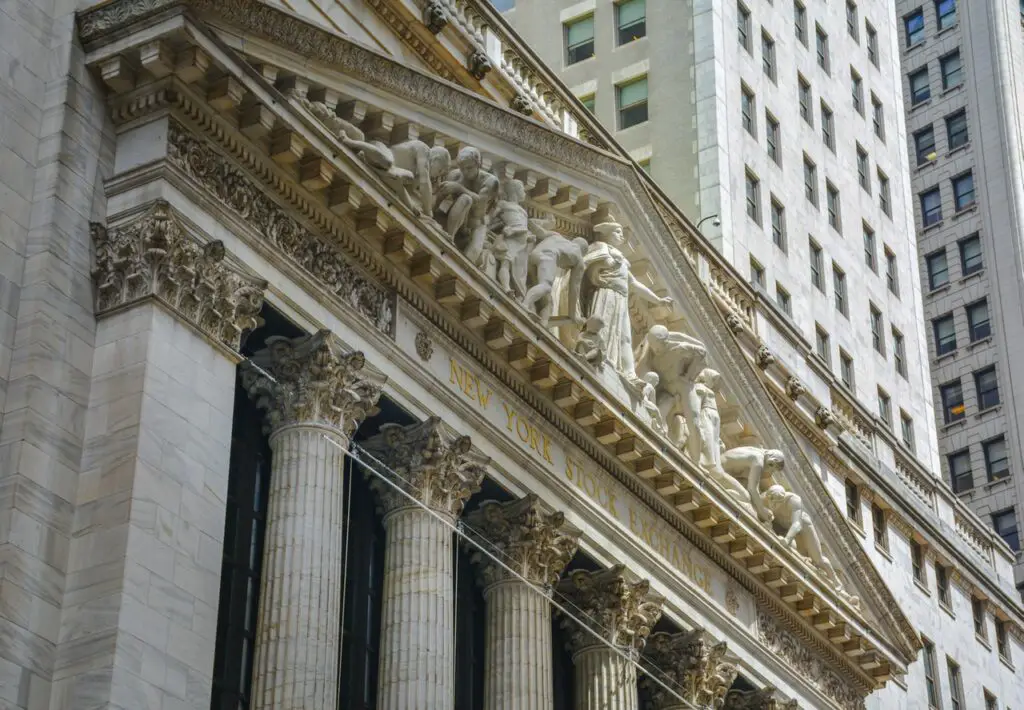
Exchange traded funds or ETFs are known for their relative stability and somewhat reliable appreciation, especially for major index tracking funds. However, there are many types of ETFs, and a few are volatile and riskier. But can they go to zero?
ETFs can go to zero if the stock price of the underlying assets fall quickly. This is most common with triple leveraged ETFs. For ETF’s that track index funds the likelihood of this happening is near zero. The stock market has safety protocols, like circuit breakers, preventing market collapse.
For normal ETF’s practically impossible to go to zero or even depreciate beyond a limited extent in a short span. Even the riskiest ETFs are unlikely to go to zero due to the same reasons, albeit they can depreciate immensely.
Reasons Why ETFs Cannot Go to Zero
The value of ETFs are inherently tied with the prices of underlying assets. While its much more likely that a single company declares bankruptcy the likelihood of an entire portfolio of them is highly unlikely.
Consider the current value of shares of a company, irrespective of growth or value stocks. Now, assume an unlikely moment when the company’s entire market cap disappears, and all its net assets fall short of the unpaid debts.
Even then, the share price will be above zero.
Sellers wouldn’t liquidate their stocks for no cash. Also, the company would need to have more debt than net assets, and there must be no prospect of any earnings or profits in the future for such a situation to occur. Besides, most ETFs will discard such a stock before this hypothetical crash.
At this point it is likely banished to the OTC markets.
ETFs Are a Bouquet of Securities or Assets
Most ETFs have a bouquet of assets, from securities or equities to index funds, bonds, commodities, currencies, and diversified portfolios.
No ETF is a fund resting solely on one stock and mirroring only its real-world performance. Thus, one company’s stock plummeting may not have much effect on an ETF, and all underlying assets crashing in a day is a hypothetical event.
In 1929, the Dow lost nearly 50% of its value in a span of three weeks. The Great Depression plummet from the Dow’s peak was nearly 90% over two and a half years until the summer of 1932.
During the 2008 stock market crash, the Dow lost around half of its value in over a year.
In 2020, the Dow lost around 20% of its value in one month. However, the crash during the pandemic didn’t linger, albeit it heralded a bear market following almost a year-long bull market.
One of the fundamental reasons why ETFs have gained in popularity is because of their stability and diversification of their portfolios and underlying assets. They don’t put all their eggs in one basket, but rather, the investment is spread out, and every emerging threat is mitigated to protect a fund’s net value.
Trading Halt and Circuit Breaker
Popular ETFs are based on indices, such as the Dow (Dow-Jones Industrial Average) and S&P (Standard & Poor’s). So, ETFs have a myriad of securities or assets across industries or sectors, market caps, and values of stocks. Thus, one stock crashing has little effect on an ETF.
However, let us now consider ETFs with a specific type of asset for the purpose of this discussion. A few examples could be a portfolio of banking stocks, value stocks, or growth stocks.
Theoretically, multiple stocks in one sector can crash heavily and quickly.
This has happened multiple times to the Chinese company Evergrande. This company isn’t even listed on American exchanges and is still subject to trading halts. So even international markets are somewhat protected.
Essentially, a circuit breaker halts trading if there’s an intraday crash. In the US, a circuit breaker stops trading when the S&P 500 Index plummets by 7%, then 13%, and subsequently 20%. A circuit breaker can halt trading for an entire stock exchange or all the stock markets.
Therefore, an ETF based on the S&P 500 Index won’t fall beyond the 7% through 13% to the 20% limit. Circuit breakers are reviewed daily depending on the previous day’s closing value.
Besides, all well-known ETFs have contingencies to mitigate such alarming depreciations.
In the unlikeliest of scenarios, when a major index, curated fund, combination of equities, and other financial instruments continue to nosedive, almost all ETFs will undergo stringent and comprehensive reviews to alter the very portfolio of these underlying securities or assets.
Bust ETFs Are Liquidated
ETFs are much less volatile than individual stocks and tend to appreciate over time. However, they’re not immune to all financial climates. All ETFs have sponsors that are usually asset management companies or brokerages. Wisdom Tree and Vanguard are well known examples.
Thus, these companies or sponsors decide the policies for their ETFs.
An ETF can be unprofitable, merge with another fund, or effectively go bust. A bust ETF doesn’t imply all investors lose their investments, and the ETF doesn’t hit zero in value. Instead, a bust ETF, whether unprofitable or merging with another, is liquidated following due process.
All investors are notified about such ETF liquidation, and they can dispose of their assets at the prevailing or set prices. Thus, even a bust ETF can’t go to zero. As an investor, you won’t lose much value compared to the current investment you have in the particular ETF.
ETF sponsors may go bankrupt, which will be a reason for the fund to go bust.
However, another sponsor, asset management company, or adviser will buy and take over the ETF’s management. All liquidated assets are accounted for and cash payments paid to investors.
The only deduction would be unaccounted for management and processing fees, as applicable.
Investors should note that such liquidation and safeguarding protocols apply to ETFs or exchange-traded funds, not ETNs or exchange-traded notes. The latter is a distinct type of investment that’s not regulated per the framework of the Investment Company Act of 1940.
Scenarios When ETFs Can Go to Zero
ETF’s have become synonymous with passive management, but not all ETF’s are index trackers. There are many actively managed ETF’s.
One of the most well known right now is Kathie Woods Ark innovation ETF. While not exactly risky compared to the below styles of active management it is much more volatile than a passively managed index fund.
Inverse ETFs
An inverse ETF is essentially reverse mirroring an underlying asset. This is usually done by shorting specific stocks or other ETF’s in an industry. So, if a stock or group of underlying assets appreciates by a certain value, the inverse ETF depreciates to the same extent.
An inverse ETF may go to zero if the underlying assets appreciate by 100%.
However, the theory doesn’t play out in the same way for a few reasons. An inverse ETF is reset every day. Thus, only a 100% appreciation of the underlying assets within the span of a trading day can plummet the inverse ETF to zero.
Furthermore, a trading halt will come into play with wild swings of stock prices, and a circuit breaker will be in effect for larger crashes. Still, an inverse ETF is riskier than the typical funds, and value investors may lose much more in a short span.
Leveraged ETFs
Leveraged ETFs are riskier than regular exchange-traded funds due to their 2x or 3x multipliers of debt. Thus, a leveraged ETF should theoretically go to zero whenever the underlying assets depreciate proportionately.
All underlying assets of a leveraged ETF should depreciate by a net 50% or 33% from its current value in a day or some time for the mirroring 2x or 3x exchange-traded fund to go to zero. This is probably the most common way an ETF can go to zero.

Also, there are inverse leveraged ETFs that further complicate the normal permutations and combinations to determine if an exchange-traded fund can go to zero. However, these funds or portfolios are rarely designed for value investors seeking stability and steady appreciation.
Black Swan Events
There are a few black swan events in the history of stock markets when the value of a share has appreciated exponentially or plummeted to more than half of its price. Such incidents can be the subject of discussions and hypothetical assessments but not a practical analysis.
Volkswagen’s share price underwent an exorbitant 93% appreciation once.
Gateway Industries recorded an unprecedented 20,000% appreciation following a newsbreak. An inverse ETF with Gateway industries as a major holding may have gone to zero, but exchange-traded funds do not usually concentrate explicitly on any one stock.
Conclusion
Most ETFs can’t go to zero unless you invest in unreliable funds with commodities and other derivatives as underlying assets, which aren’t actually owned and may be subject to anomalous tracking. Dividend, value stocks, bonds, currencies, and index-based ETFs won’t go to zero.
